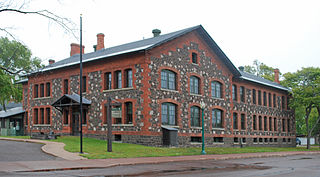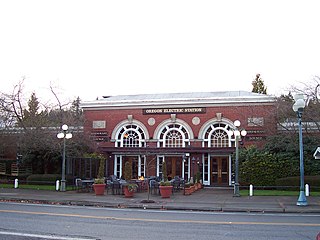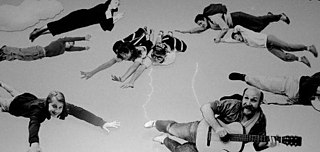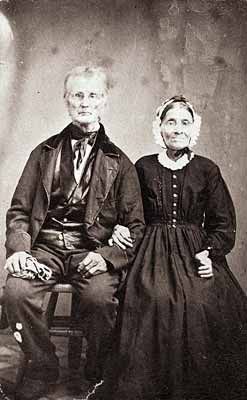
Lane County is one of the 36 counties in the U.S. state of Oregon. As of the 2020 census, the population was 382,971, making it the fourth-most populous county in Oregon. The county seat is Eugene, the state's second most populous city. It is named in honor of Joseph Lane, Oregon's first territorial governor.

Civic Stadium was an outdoor athletic stadium in the northwest United States, located in Eugene, Oregon. For most of its history it was owned by the Eugene School District. Opened in 1938, the stadium was destroyed by fire in 2015 on June 29.

Keweenaw National Historical Park is a unit of the U.S. National Park Service. Established in 1992, the park celebrates the life and history of the Keweenaw Peninsula in the Upper Peninsula of the U.S. state of Michigan. As of 2009, it is a partly privatized park made up of two primary units, the Calumet Unit and the Quincy Unit, and 21 cooperating "Heritage Sites" located on federal, state, and privately owned land in and around the Keweenaw Peninsula. The National Park Service owns approximately 1,700 acres (690 ha) in the Calumet and Quincy Units. Units are located in Baraga, Houghton, Keweenaw, and Ontonagon counties.

Goshen is an unincorporated community in Lane County, Oregon, United States. It is located at the junction of Oregon Route 58, Oregon Route 99, and Interstate 5.

The Oregon Electric Railway Passenger Station is a historic railroad station in Eugene, Oregon, United States. It was built in 1914 as a station for the Oregon Electric Railway and was designed by A. E. Doyle.

Five Oaks Museum, formerly known as the Washington County Museum, is a history museum in Washington County, Oregon, United States. It is located at the Rock Creek campus of Portland Community College (PCC), north of Beaverton, Oregon. From 2012 to 2017, its public exhibit space was located in downtown Hillsboro, Oregon, before it was moved back to PCC, its pre-2012 location and where the museum's research facility had already been located.

The Oregon Historical Society Museum is a history museum housed at the Oregon Historical Society in downtown Portland, Oregon, United States. The museum was created in 1898 and receives about 44,000 visitors annually.

Lehigh County Historical Society is a nonprofit organization, founded in 1904, dedicated to collecting, preserving, and exhibiting the history of Lehigh County, Pennsylvania and the Lehigh Valley region of eastern Pennsylvania. The Historical Society and Lehigh Valley Heritage Museum are located at 432 West Walnut Street in Allentown.

Wendling is an unincorporated community in Lane County, Oregon, United States, located northeast of Marcola. Wendling's post office operated from 1899 to 1952. It was named for George X. Wendling, a local lumberman. Wendling was created as a company town for the Booth-Kelly Lumber Company.

The Goodpasture Bridge spans the McKenzie River near the community of Vida in Lane County, Oregon, United States. It is the second longest covered bridge and one of the most photographed covered bridges in the state. The Goodpasture Bridge is listed on the National Register of Historic Places.
Disston is an unincorporated community in Lane County, Oregon, United States, southeast of Cottage Grove where Brice Creek and Layng Creek join to form the Row River. It is about a mile west of the Umpqua National Forest. Its post office opened in 1906 and ran until 1974. Cranston Jones—the first postmaster—was also one of the founders of the first sawmill in Disston and the name of the town came from the famous Disston saws.

Occupy Eugene was a collaboration that occurred in Eugene, Oregon based on the Occupy Wall Street movement which began in New York City on September 17, 2011. Occupy Eugene included peaceful protests and demonstrations. Protesters were concerned about inequities in the distribution of wealth, banking regulation, housing issues and corporate greed. The first protest march was held on October 15, 2011. The march started at the Wayne Morse Free Speech Plaza and continued downtown before marching over Ferry Street Bridge. It was reported that close to 2000 people were in attendance from all over the state of Oregon. Occupy Eugene continued to hold regular protests and actions until it left the encampment in December 2011. Protesters have stated that they do not have a set group of leaders. Occupy Eugene General Assemblies have met from as frequently as twice a day at times during active occupations, and as infrequently as weekly. Many committees have met since at least the third General Assembly, typically weekly. Decisions are made through a process known as consensus. Occupy Eugene's consensus process operates in a similar fashion to how consensus is being handled in New York City by protesters involved in Occupy Wall Street. Although the exact method varies from Occupation to Occupation. As of October 18, 2011, The Eugene police department was allowing protesters to camp in downtown Eugene, although city law prohibits it. Eugene police also stated that downtown camping won't be permanently allowed.
Cal Marcellus Young, sometimes known as "Mr. Eugene," or "Mr. Lane County," was an American college football coach and a pioneer of Eugene, Oregon. He was the first head football coach at the University of Oregon.
The Eugene Mall was a car-free zone in the heart of Eugene, Oregon, United States, designed to encourage pedestrian access to shopping and entertainment areas. Dedicated on February 13, 1971, the mall opened amid three days of fanfare and dreams of a revitalized downtown. Conflict over the scope and use of the mall began immediately and continued for 30 years until the last remaining parts of the mall were opened to automobile traffic. At that time, a former Eugene mayor commented that the city's dreams for a bright future just hadn't worked. Many residents, however, shared the much-earlier view of a former downtown merchant, that Eugene had sustained more damage from the mall than it would have from a natural disaster.

Flight Patterns, also known informally as Flying People, is a seven-panel photographic sculpture installation of 176 black and white cutouts by David Joyce, designed to be installed in 1989 in Concourse A at the Eugene Airport in the U.S. state of Oregon. During airport construction in 2015–2016, it was moved to Lane Community College. The airport renovations were completed by early January 2017, and all but about 30 of the original Flight Patterns images were reinstalled at the airport in early December 2017.

Elijah Bristow (1788–1872) was the first white settler to stake a claim and build a permanent cabin in 1846 in the upper Willamette Valley, in what is now Lane County, Oregon, United States. He and his wife Susannah Gabbert Bristow established the first church and donated land for the first school in Pleasant Hill.
The Ernest and Mary Hemingway House, in Ketchum, Idaho, is listed on the National Register of Historic Places in 2015. The National Register does not disclose its location but rather lists it as "Address restricted." The property is the last undeveloped property of its size within the city limits of Ketchum.

The Hayden RR Bridge, is a truss bridge located in Springfield, Oregon, spanning over the McKenzie River. It initially served as a traditional railroad bridge, starting as part of the first transcontinental railroad in Utah, before moving to its current location as part of the Marcola line, whose primary use was the distribution of lumber. It later closed alongside the area's lumber mills, and became a pedestrian bridge in 2019. It is one of the few remaining wrought-iron, Phoenixville bridges still standing, and the oldest intact bridge in the state of Oregon.

The Mims House in Eugene, Oregon is a Gothic-style, single-family home considered to be one of the oldest homes in the area. It is known for being the home of the Mims family, who became one of the first African American homeowners in Eugene when they purchased it in 1948. During the period of racial segregation in Eugene, the Mims family frequently hosted African American visitors to Eugene both at their home and in the adjoining boarding house which they owned. The building is a Historic Landmark located within the East Skinner Butte Historic District. As of 2021, the Eugene-Springfield branch of the NAACP is located in the Mims House, although the home also operates as a museum.















